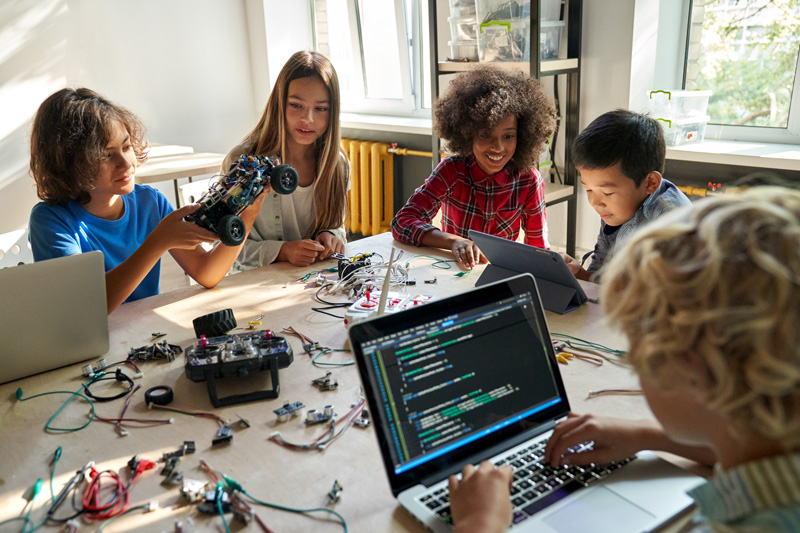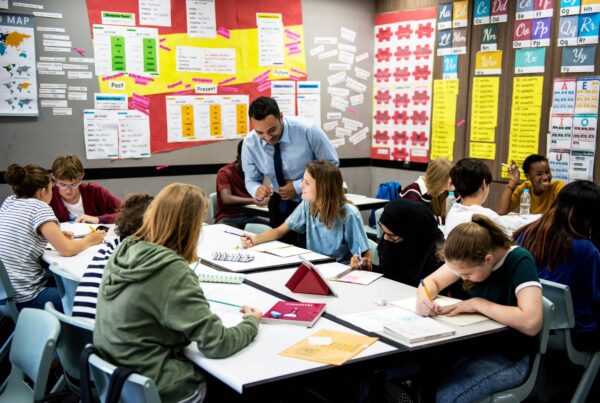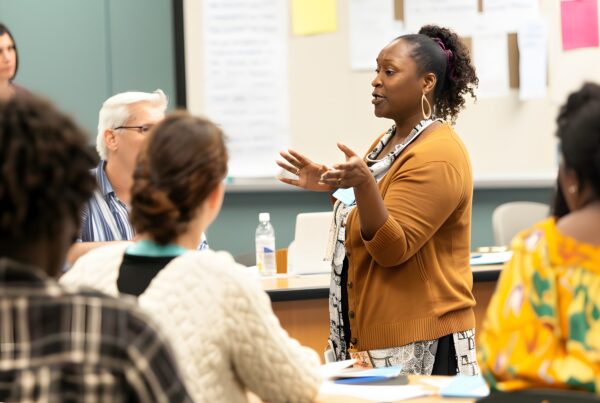
To ensure today’s learners thrive, the classroom environment must be intentionally designed for all students to be successful in their learning. The Marzano Focused Teacher Evaluation Model emphasizes the importance of creating classroom environments that foster student success. Here are four key conditions, rooted in the Marzano framework, that explain how classroom environments can meet the needs of today’s students while maximizing academic achievement.
1. Enliven the Classroom Environment with Real-World Problems
Aligned with the Marzano Element “Helping Students Engage in Cognitively Complex Tasks”
Any classroom environment serving today’s students must prioritize developing skills that are essential for their academic learning and future success, such as:
- Collaboration
- Communication
- Critical thinking
- Problem-solving
To develop these competencies, the Marzano framework emphasizes the importance of teachers planning for activities and tasks that present students with real-world problems to solve. In classroom environments designed for today’s learners, students participate in inquiry-based learning, respond to open-ended questions, analyze information, and defend their conclusions.
Learning experiences tied to the real world keep learners engaged and allow them to achieve a deeper understanding of the content. This key approach aligns with the Marzano model’s focus on creating rigorous, relevant tasks that stimulate student thinking.
2. Enhance Cognitive Engagement with Challenging Learning Opportunities
Aligned with the Marzano Element “Using Engagement Strategies”
Classroom environments should prioritize learning opportunities such as collaborating in groups, student-led discussions, and dialogue, all of which increase cognitive engagement. There is a vast difference in our brain activity when we are listening versus when we are explaining. As educational neuroscience researcher Dr. David Sousa says, “The brain that does the work is the brain that learns” (Toth & Sousa, 2019).
The Marzano model aligns with effective teaching practices that offer students multiple ways to engage with the content, such as:
- Hands-on activities
- Discussions
- Multimedia
If the learning experience does not provide for productive struggle, relevance, or real-world context, students will not be cognitively challenged or engaged. The Marzano model supports designing a rigorous learning environment with tasks that push students to:
- Examine their reasoning
- Debate conclusions
- Solve problems
- Create solutions
- Exercise accountability as they coach one another
A classroom environment of cognitive engagement challenges today’s students and elevates their learning to the next level.
Subscribe for monthly insights about evaluation that leads to measurable growth.
3. Motivate Students by Giving Them Ownership of Their Learning
Aligned with the Marzano Elements “Using Formative Assessment to Help Students Track Progress” and “Providing Feedback and Celebrating Progress"
A key approach to motivating today’s learners is giving them a voice and role in the classroom environment. The Marzano framework emphasizes clear expectations and feedback from teachers to improve student performance while also increasing motivation.
When students have a say in their education, they are more likely to:
- Persist in their learning and make progress towards the learning target
- Have pride in their accomplishments
- Feel engaged and sustain their motivation
Teachers can further enhance student motivation by encouraging self-reflection, goal-setting, and progress tracking, which creates a classroom environment of high student ownership. This aligns with the Marzano model’s principles of creating classroom conditions that get results for today’s learners.
4. Foster Trust and Respect in a Supportive Classroom Environment
Aligned with the Marzano Element “Establishing and Maintaining Effective Relationships in a Student-Centered Classroom”
The foundation of a successful classroom environment is the relationship between teachers and students. Trust, respect, and open communication create a supportive environment where students are motivated to learn.
Students must feel that they are valued members of the classroom community. Teachers foster a culture of respect by modeling and providing opportunities for students to practice empathy and conflict resolution.
Designing a Classroom Environment for All Learners
The classroom environment of today must be a dynamic space where every learner feels seen, heard, and empowered to reach their full potential. By enabling the four key conditions above—real-world problems, challenging learning tasks, student ownership, and a supportive classroom environment—teachers can create classrooms that are not only conducive to learning but also prepare students to navigate an increasingly complex and interconnected world.
These principles align directly with the Marzano Focused Teacher Evaluation Model, which leverages more than a decade of ongoing research and best practices to guide schools in creating classroom environments that foster academic achievement and real-world skills for every student.
About the Author
Martha Hightower, Ed.D.
Dr. Martha Hightower serves as the Product Development Specialist for Marzano Evaluation Center. In addition, she delivers professional development to both teachers and school leaders in various schools to improve planning, instruction, and evaluation.
She has extensive experience in education ranging from special education to general education in primary and secondary schools. She also was a school leader for over ten years in Orlando, Florida where she resides. She received a doctorate degree in Organizational Leadership from Nova Southeastern University.
Dr. Hightower is affiliated with several local non-profit organizations and is committed to leading change and helping others develop systems and plans to sustain better living after trauma.
References
Toth, M. D. & Sousa, D. A. (2019). The power of student teams: Achieving social, emotional, and cognitive learning in every classroom through academic teaming.
Subscribe for monthly insights about evaluation that leads to measurable growth.
About Marzano Evaluation Center
The Marzano Evaluation Center is the foremost destination to inquire about and receive access to the world-renowned Marzano Focused Teacher Evaluation Model (FTEM). The Focused Teacher Evaluation model, along with our school leader, district leader, and support staff evaluation models culminate in our systemwide approach to evaluation. This comprehensive approach has allowed us to collaborate with school districts to improve their educational outcomes by aiding professionals in attaining useful feedback on classroom and personal performance.




